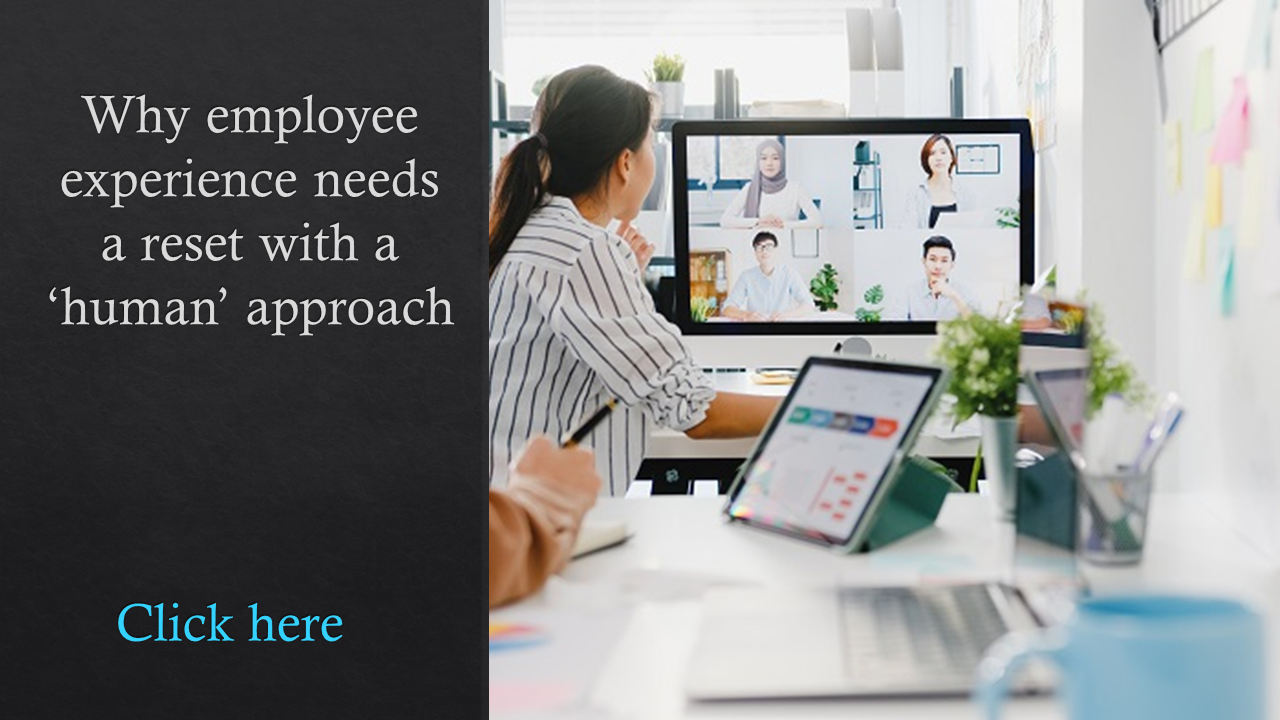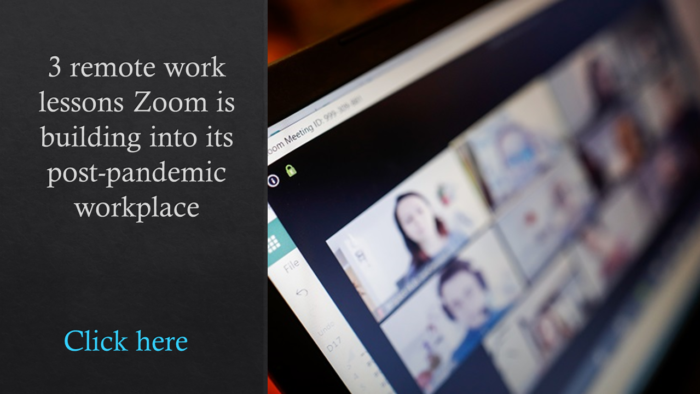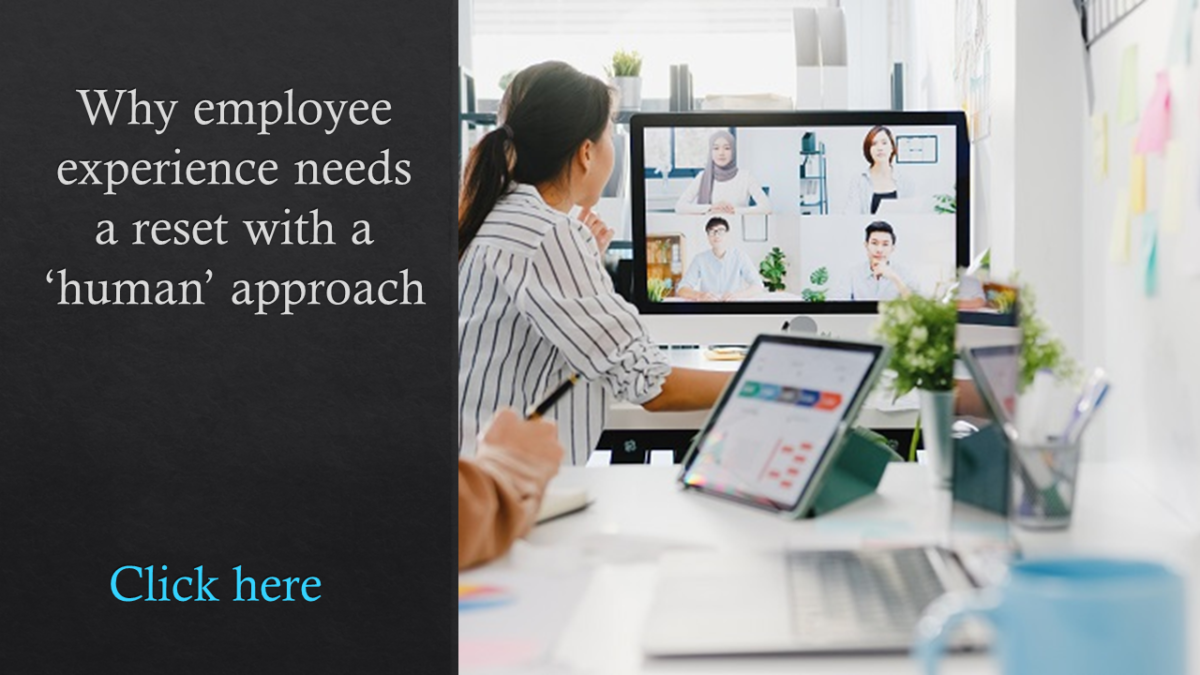The global pandemic has upended business as usual, including the environment in which work happens. These changes have brought about not just a tsunami of hybrid workplaces, but the need for leaders to consider how hybrid work can provide equitable access to career advancement for all employees.
It is clear that hybrid working, where employees work both remotely and in the office, has gone from a temporary accommodation to a mainstream workplace practice. Pre-pandemic, 20% of U.S. adults whose jobs could mostly or entirely be performed outside of the office worked from home, and that number jumped to 71% during the pandemic, according to Pew Research.
But the question remains: Are companies and employees set up for success working in a hybrid environment? Our research, The New Hybrid Workplace, Built on Resilience, Transparency and Trust, conducted among nearly 1,000 HR leaders, business leaders and full-time employees, points to uncertainty among hybrid workers about how to succeed in this new setup. For example, 32% of employees prefer a hybrid work environment, but 43% view in-person work as the best for career advancement.
Figure 1 details these findings in what we call: The Career Conundrum of Hybrid Work.
The data suggest hybrid work environments can be more demanding than working in person or remote. Employees who work in a hybrid environment shift from their home office to a satellite or corporate office, while bouncing from video calls to in-person meetings. Working in this fashion can create greater anxiety during the working day. In fact, Microsoft Teams data shows that between February 2020 and February 2021, time spent on Teams meetings more than doubled and continues to climb, with workers reporting they respond to Teams chats every five minutes.
 Leaders must address how to be successful working in the hybrid workplace and understand the principles for success. They should not only encourage, but also serve as role models for this.
Leaders must address how to be successful working in the hybrid workplace and understand the principles for success. They should not only encourage, but also serve as role models for this.
Related: Hoping for hybrid, remote success in 2022? Look to your leaders
To tackle the complexities surrounding the hybrid workplace, HR leaders need a new playbook, one that addresses employee benefits of a hybrid work model as well as how to find success. Here are three steps HR leaders can take to create the foundation for this roadmap.
- Create team autonomy in deciding the principles of hybrid work.
Hybrid work shifts our mentality on how work gets done and impacts an organization’s HR practices, technology investments and approach to how the workspace is used when employees return to the office—so companies need to create a framework that defines how to lead and how employees can be successful. Our research shows that 88% of employees at organizations with clear hybrid working guidelines feel connected to their job and their team, versus 64% of those working in organizations without such guidelines.
These principles should cover areas such as what days team members will work in-office, how remote working will be managed, the core hours for remote and hybrid workers and how managers should review team members in the hybrid work model. Ideally, companies should consider allowing managers to set these principles so they make the most sense for their teams. Microsoft did just this when CMO Chris Capossela sent a message to all employees saying they had 30 days to adjust their work schedules and adopt the working preferences they’ve agreed to with their managers. This communication from Microsoft demonstrates an important future of work principle: Hybrid work is based on flexibility and autonomy rather than firm policies. Employees decide what works best for them, and this gives them the freedom and trust to explore new ways of working.
Here are three actions HR leaders can take:
- Build a partnership between HR, marketing and IT to define and agree on a range of principles rather than “set-in-stone” policies to guide teams in achieving workplace flexibility.
- Apply empathy as a core cultural value in communicating how to implement the hybrid work model.
- Ensure your workforce has the right set of technologies and wireless peripherals—a headset, video camera, keyboard, mouse, mobile lighting—that can be transferred from the home office to a physical office or client location so they can easily stay connected.
- Be aware of conflicting views between working in a hybrid work environment and advancing in one’s career.
Our research reveals a paradox: Even as employees embrace hybrid work, they believe working in person is the optimal choice for their career advancement. This is true for employees, business leaders and HR leaders. While 48% of business leaders prefer hybrid work, about the same number, 47%, consider on-site work to be the surest route to receiving a promotion. As for employees, 32% prefer hybrid environments, but 43% regard in-person work as best for advancing their careers.
 See also: Here’s how leading-edge companies are redesigning for hybrid
See also: Here’s how leading-edge companies are redesigning for hybrid
Given the long-standing expectation for employees to work on site, such views are not surprising. Leaders must address the perception that hybrid work can negatively impact one’s career advancement and ensure that employees know how to be successful working in a hybrid environment.
Here are three actions HR leaders can take:
- Develop a program to listen to your employees so you demonstrate trust.
- Ensure equitable access to all career development opportunities—for on-site, remote and hybrid workers.
- Train leaders in how to manage employees they rarely see in person, and train hybrid workers in how to be successful in developing peer connections remotely.
3. Identify the support your organization will provide all workers across all environments.
Our research also shows leaders do not understand if employees really know how to work successfully in a hybrid work environment. More than six out of ten leaders (65%) believe they have defined what success looks like for an employee working in a hybrid work environment, but less than half of employees agree. Because of this, employees are confused, uncertain and anxious about how to advance in their career as a hybrid worker. This is impacting their overall wellbeing.
 Employers such as HP have focused on creating employee support services with a goal of encouraging certainty during the uncertainties of the pandemic. For instance, its HP Spirit program is targeted to both HP employees and families and includes health and wellbeing benefits; workplace flexibility programs such as job sharing, expanded childcare and educational assistance; virtual volunteering events; and webinars on home schooling.
Employers such as HP have focused on creating employee support services with a goal of encouraging certainty during the uncertainties of the pandemic. For instance, its HP Spirit program is targeted to both HP employees and families and includes health and wellbeing benefits; workplace flexibility programs such as job sharing, expanded childcare and educational assistance; virtual volunteering events; and webinars on home schooling.
Ford Motor Company has also expanded its view of employee support to now include “care” as one of its core company values. As Jill Sochor, global leadership development manager at Ford, says, “We want leaders to be models of resilience focusing on their own self-care to care at the enterprise and team level.”
Here are three actions HR leaders can take:
- Elevate employee wellbeing to a core competency that all leaders must master and demonstrate daily.
- Take a holistic view of employee support and include resources to enhance physical, emotional, financial, social and career satisfaction.
- Expand employee support beyond employees to include their families.
As HR leaders, we need to shift our focus from where employees work to how we can create an equitable work environment for everyone, ensuring equal access to career advancement. As Charise Le, CHRO of Schneider Electric, advises, “Organizations need to broadly define flexibility in the workplace, rather than provide a recipe for hybrid work. Our focus needs to be on how everyone can reach their full potential, regardless of their specific work environment.”
 In this context, focusing on employee wellbeing and resilience has risen beyond a benefit to being a business competency—one that requires leaders to demonstrate support for all aspects of their employees’ lives: personal, family and professional.
In this context, focusing on employee wellbeing and resilience has risen beyond a benefit to being a business competency—one that requires leaders to demonstrate support for all aspects of their employees’ lives: personal, family and professional.
Ultimately, leaders must address how to build a resilient workforce, develop and communicate principles for success—both for hybrid employees and managers overseeing a hybrid workforce—and create a culture of care for all employees, regardless of where, when or how they work.
The post Hybrid work is presenting HR leaders with a major conundrum appeared first on HR Executive.
